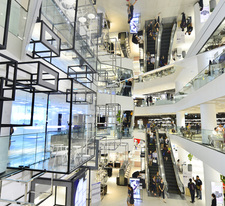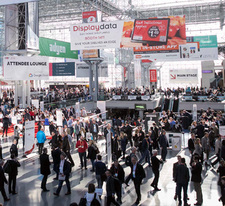They grow big and small
POOR PEOPLE
The buyer, his behavior and willingness to spend will continue to be influenced by the general economic situation in the country, changes in real incomes and the availability of loans, states Olga Yarullina. "Against the background of the current economic situation, there is a decrease in real solvent demand, especially taking into account the reforms adopted in 2018 to increase the retirement age and increase VAT," sighs Ms. Yarullina. "Most likely, the situation in the retail market will not change fundamentally during 2019, as a result of which the trends we discussed earlier will continue."
JLL agrees: the main legislative innovation of 2018, which will affect the work of the entire retail market and the fashion industry in particular, was the increase in the VAT rate from 18% to 20%. The company predicts that this step will either reduce the marginality of the tenants' business, or increase the retail value of goods. Already now we are seeing an increase in recommended prices in some retail chains.

At the same time, the approach of consumers to shopping, compared with 2018, will not change significantly, since the transformation of the behavioral model began in 2017, when there was a reduction in spending on non-essential items and, in general, "reasonable consumption", we are convinced in JLL. This trend will be supported by an increase in prices, which is inevitable due to the same increase in the tax rate, as well as an increase in utility costs.
"The main competitor of shopping centers today are online stores," reminds Olga Yarullina. Generational change has led to a change in consumer behavior: the vast majority of buyers use the Internet to search and buy goods, which is convenient and saves a lot of time. To attract visitors, shopping centers are changing concepts, and also becoming multi-format (among the tenants of the shopping center there are now dance schools, MFC, post offices, and even private clinics). The entertainment component plays an increasingly important role in attracting traffic. Public spaces are developing from various playgrounds, children's towns (Zamania, Kidzania, Anthill, etc.) and play areas for adults and children to fundamentally new ones, but already popular formats of catering – food halls and market place. The same IKEA, for example, began organizing meeting spaces in the MEGA shopping center throughout Russia (creating playgrounds, social facilities, even parks with reservoirs adapted for water entertainment, etc.), and the concept for each shopping center is unique and reflects the peculiarities of the city and culture. Non-standard formats will continue to appear in the shopping center: coworking, exhibition areas, premises for showrooms, pop-up stores and online stores for short-term rent. Pop-up points provide additional sales without large rental costs, an increase in the audience, the opportunity to present a limited or thematic collection of goods and communicate directly with customers.

"Against the background of a limited supply of high-quality retail space and increased competition for buyers, back in 2018, the trend of combining various services and goods into a single space intensified in the market," agrees Ekaterina Zemskaya, head of the retail real estate department at JLL. There is an active collaboration of formats and concepts: cafes and shops, coworking and cafes, shops and children's rooms, entertainment and education.
However, the growth of online commerce in Russia as a whole does not yet affect the development of the retail real estate market, as the indicator of the availability of retail space in Russian cities remains at a fairly low level, according to JLL.
ELECTRONIC SCALES
Against the background of the boom in online commerce, the transformation of the warehouse segment and urban logistics continues. There is an increase in the number of investment projects, including distribution centers for grocery companies and online retailers, data centers, etc.

According to Radius Group forecasts, the main buyers and tenants of warehouses in 2019 will also be retailers, both classic and e-commerce companies, which have become more active in the last few years. Now the warehouse real estate market is waiting for new major deals from leading online retailers: Yandex.Market and the joint venture Alibaba, Mail, Megafon and RDIF, which last year announced plans to develop their logistics infrastructure. These transactions will become an important driver of market development. The growing activity of e-commerce companies also stimulates the development of new formats of the so-called "last mile warehouses" in Moscow. In particular, last year a number of modern projects of the light industrial format were announced in the capital, which in the future can be used by online retail as service centers and warehouses of the last mile. Such objects will actively appear both in the capital, inside the Moscow Ring Road, and in other major cities, the company predicts.
Text: Ekaterina Reutskaya
Photo: shutterstock











